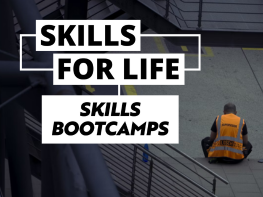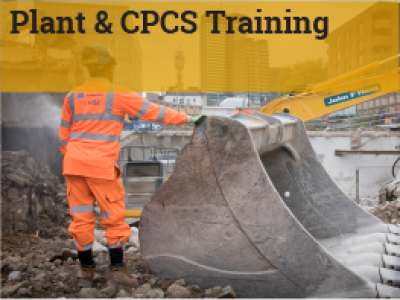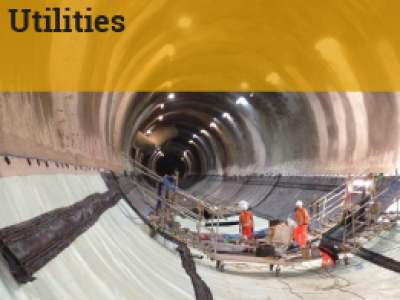Gas
- Home
- All Courses
- Utilities
- Gas
- SHEA – Gas – EUSR Accredited
SHEA – Gas – EUSR Accredited

Modules
| Module 1Your Responsibilities | State the duties of their employer under the Health & Safety at Work etc. act (1974) not to allow injury to occur to their employees and other persons. Explain requirements for instruction, information and training. State their duties under the Health & Safety at Work etc. Act (1974) not to harm themselves or other persons. Describe the role and powers of HSE inspectors. State the principles followed in the Construction, Design & Management Regulations (2007) (CDM). Explain the role of a Safety Policy and a Safety Management System. Briefly explain the costs associates with poor environmental management. Describe the responsibilities of the Environmental Agency and Scottish Environmental Agency. |
|---|---|
| Module 2Risk Assessment | Define hazards (potential to cause harm). Define risks. Describe the 5 step approach to risk assessment. State hazards associated with people, equipment, materials, working environment and natural environment. Describe appropriate control measures. Describe the principles behind risk reduction methods including the hierarchy of control, using ‘real world’ examples. State types of PPE which can be used. Explain the need for PPE. Explain the responsibilities of the employer to provide and maintain PPE. State their responsibility to wear, maintain and store PPE. Explain how PPE is selected. |
| Module 3Workplace Procedures | State hazards associated with access and egress to place of work e.g. falls from height, slips, trips etc. State the reasons for good housekeeping. Explain signage used in the working environment. Describe the welfare provision required. Define the terms: ‘hazard’, ‘near miss’ and ‘accident’. Explain the required reporting processes for near miss, accidents, work related illnesses and dangerous occurrences. Explain why all accidents should be reported, however minor. State general emergency procedures e.g. fire evacuation and first aid. Explain the need to assist in any investigations. Recognise extinguisher types and their correct use. |
| Module 4Pressure Regulating Installations (Upstream Additional Module) |
State the definition of an AGI, PRS, DG, BG, etc. State the appropriate actions to be taken when accessing AGIs where construction and updating activities are taking place. Be aware of the risks on shared site activities (contractors working on company sites) and CDM. Understand the risks associated with lone working and personal security. State the procedure for working on a non-odorised site. How to respond to emergency situations. e.g. gas escape. |
| Module 5Safety in Premises (Downstream Additional Module) |
Recognise the importance of carrying out an on-site risk assessment. State the range of hazards that may be found in and around premises. State the control measures applied to activities within premises. Apply correct communication procedures with the public with reference to the participant and customer’s safety. State the priorty actions to be taken in the event of an emergency. |
| Module 6Physical Hazards (Part 1) | State the responsibilities of employers and employees under the Provision & Use of Work Equipment Regulations (PUWER). Describe the use of appropriate safety equipment e.g. lifting aids. State basic checks requierd prior to operating portable electrical tools. State the risks from transport. Describe how to ensure the mobile plant is operated safely. Demonstrate understanding of the need for plant inspections. State the need for specific plant training. State the basic conditions required to be met in order to comply with the Lifting Operations & Lifting Equipment Regulations (LOLER) (1998). State the basic principles applied within working at height regulations. Describe how ladders are used safely. Describe the need to maintain safe distances from overhead services at which vehicle, plant and equipment can be used safely and the requirements if it is necessary to work closer. State the requirements when working in the vicinity of a railway. |
| Module 7Working in the Highway (Upstream Additional module) |
Understand basic principles of working within the highway, e.g. signing, lighting & guarding. State what checks should be carried out on a vehicle before travelling. State the considerations for working in the vicinity of the public and particular locations. Understand safe egress and access to and from network sites, e.g. plant and delivery movements. |
| Module 8Physical Hazards (Part 2) | Describe hazards associated with excavations. Explain the hazards of working with gas / water / electricity. Describe why markers alone may not be an accurate indicator of the position of underground services. Describe how to locate underground services safely. Explain why all excavations must be made safe from collapse. State the requirements for impaction of supported excavations under CDM regulations. Define a confined space. Describe the hazards associated with confined space. Explain who can enter a confined space. |
| Module 9Excavations (Upstream Additional Module) |
Understand safe systems of work, e.g. site specific risk assessment and method statements as applied to excavation. State the requirements for the location, identification and avoidance of underground services. Understand safe digging techniques. Be aware of the techniques used to prevent ground collapse. Actions to be followed in case of damage to services. |
| Module 10Hazards to Health (Part 1) | Explain the considerations prior to moving a load. Describe the potential effects of noise. State the level of noise at which hearing protection must be made available and at which it must be worn. State causes of Hand Arm Vibration. Describe signs and effects of Hand Arm Vibration and how it can be prevented. State causes of Whole Body Vibration and how the risk can be minimised. |
| Module 11Hazards to Health (Part 2) | State appropriate risk assessments regarding COSHH. Describe potential effects of health on hazardous substances. State types of biohazards. State risk areas for leptospirosis and describe how to minimise the hazards associated with it. State risk areas for hypodermic needles and describe how to minimise the hazards associated with them. Explain the role of Occupational Health. Describe examples of physical, chemical and biological hazards that can affect the employee’s health and safety. State personal responsibilities to maintain personal health and safety e.g. awareness of occupational stress. |
| Module 12The Environment | Describe key environmental considerations. Explain how your activities can affect the environment. Describe potential causes of environmental damage. State and give examples of different types of waste. State the waste hierarchy. Explain how to store waste safely. Explain why waste should not be disposed of in water courses or burned. State high risk areas for hazardous materials. Describe the procedure for dealing with an emergency spillage. Explain reporting requirements for environmental incidents. |
Course Features
- Activities Gas
You May Like
Gas Distribution – Skills Upgrade to SCO Engineer Level 3
Course overview Skills Bootcamp in Gas Distribution Skills Upgrade to SCO Engineer Level 3 Benefits of attending for the learner Hands on Skills training offer co-funded opportunities...
A56B CPCS Articulated Dump Truck – Wheeled – Novice/Foundation Course (4 days)
Price includes VAT, CPCS Test Fees, and CPCS card. Who Attends This CPCS A56 Articulated Dump Truck course is designed for new entrants with little or...
A04C Tower Crane – Trolley Jib – Remote Controlled – Novice/Foundation Course (3 days)
Course Criteria: **Please note that you must have achieved your Health & Safety Test for Operatives within the past 2 years in order to be permitted to...
Impact Moling – Trenchless Technology
Course overview A 1 day training course for operatives and managers, designed to deliver knowledge and practical appreciation of impact moling and trenchless...
PE Electro-Fusion & Butt-Fusion Welding
Participants Any utility operative carrying out butt fusion and electro fusion welding. Aim To provide operatives with the necessary skills and knowledge to perform butt fusion and...



